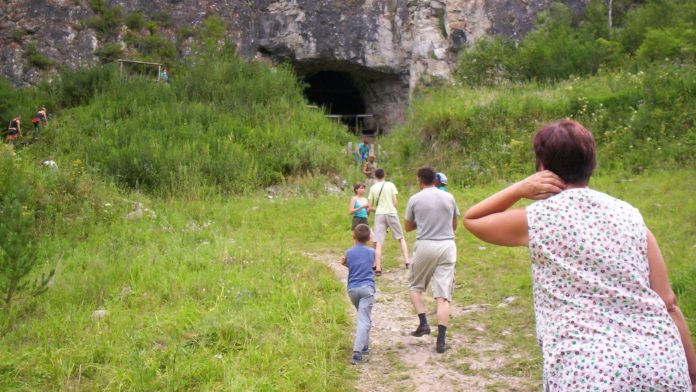Humans have several ancestral relatives from long-gone eras, but few are as enigmatic as the Denisovans.
Their existence was first uncovered at Denisova Cave in Siberia’s Altai Mountain region, and results confirming their unique lineage were published in 2010. Denisova Cave was occupied by Denisovans and Neanderthals at various points, and possibly by modern humans too, but this remains an open question.
New research by Canadian and international researchers has placed a timeline on when Denisovans and Neanderthals were present in the cave and offered insights into what environmental conditions they faced prior to extinction.
There is also speculation that some of the cultural artifacts and tools discovered on site could have been made by the Denisovans, though further research will be required to answer this question.
With more answers come more questions
Although Denisova Cave has proven highly significant for the study of human evolution, we know little about Denisovan activity, the span of their existence, or what degree of inter-species overlap occurred. This is because current knowledge of Denisovans stems only from teeth and bone fragments found in Denisova Cave.
Using these samples, researchers previously determined their roaming area, which was between Siberia and Southeast Asia. They also discovered that they interbred with Neanderthals, to whom they are more closely related (and share a common ancestor) than modern humans.
‘Denny’, a half-Neanderthal, half-Denisovan hybrid girl, was the first individual with parents from separate species of human to be discovered. Traces of Neanderthal and Denisovan DNA exist in modern humans, but Denny was the first direct evidence of inter-species hybridization.
Regarding the life and times of Denisovans, however, difficulty in ascertaining dates for the fossil fragments has proved to be a major obstacle in our understanding.
Digging up dates by analyzing mineral deposits’ last exposure to sunlight
In the quest to unlock more of the Denisovan story, researchers had to use more sophisticated dating analysis techniques. Carbon-14 dating was insufficient for the study of the fossils because of the method’s upper limit of 50,000 years.
Other measurement methods which go further back by assessing the sediment local to the fossil via stratigraphic analysis were also problematic. The freeze-thaw cycles of Siberia and disturbance from burrowing animals over millennia have interfered too much with the layers to make these methods reliable.
So, for especially older dates, the team opted for a more cutting-edge form of stratigraphic analysis. Optical dating determines when particular minerals within the sediment layers, like quartz, were last exposed to sunlight, thereby helping to unravel the complex stratigraphy of the deposits.
Researchers then correlated this data with that of fossil remains and DNA present in the soil, and a clearer picture of the timeline began to emerge.
Were our distant cousins cultural craftsmen like modern humans?
Results show that Denisovans may have been living off and on in the cave up to 300,000 years ago, while Neanderthals joined the picture somewhere between 200,000 and 90,000 years ago. This fits in with the story of ‘Denny’, who is estimated to have lived around 100,000 years ago.
Regarding environmental conditions, evidence of a Neanderthal presence peaks at around 120,000 years ago. This is within range of the last interglacial period, also known as the Eemian period, when the climate was relatively warm.
On the other hand, the Denisovans persevered through much harsher environmental conditions across the span of their time in this area. They appear to have died off around 50,000 years ago.
Analysis of the various artifacts such as bone pendants and tools places them between 49,000 and 34,000 years ago. These dates flirt the line with the Denisovan timeline, and although a fascinating prospect, it is unclear whether the artifacts were their product or that of modern humans.
No modern human remains from the Upper Paleolithic era have been found in the Altai mountain region, but cultural items like these indicate higher intelligence and are typical of our ancestors. Researchers don’t know if the Denisovans were capable of it, but examples of jewellery with complex symbolism have been discovered and dated as far back as 100,000 years ago.
“It is an open question as to whether Denisovans or modern humans made these personal ornaments found in the cave,” says co-author Tom Higham of Oxford University.
“We are hoping that in due course the application of sediment DNA analysis might enable us to identify the makers of these items, which are often associated with symbolic and more complex behaviour in the archaeological record.”





































